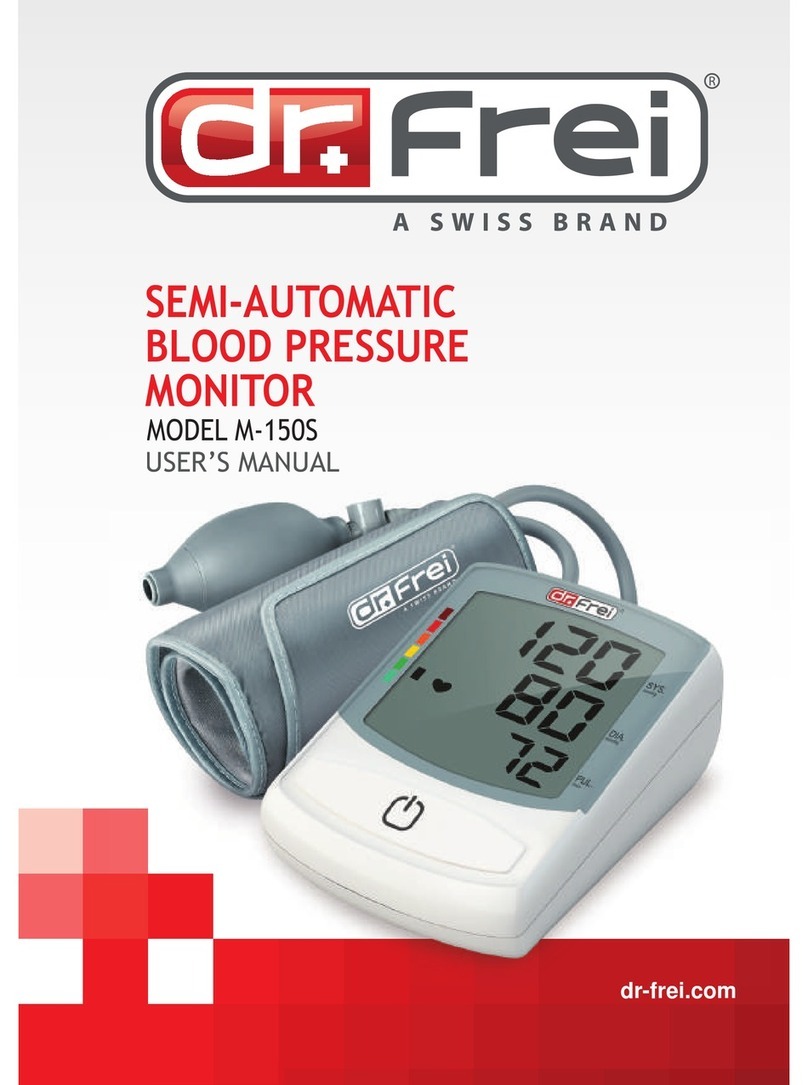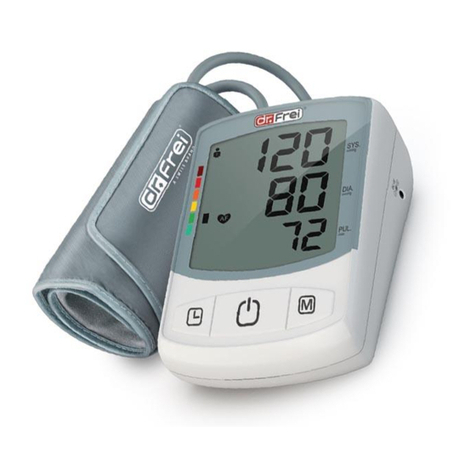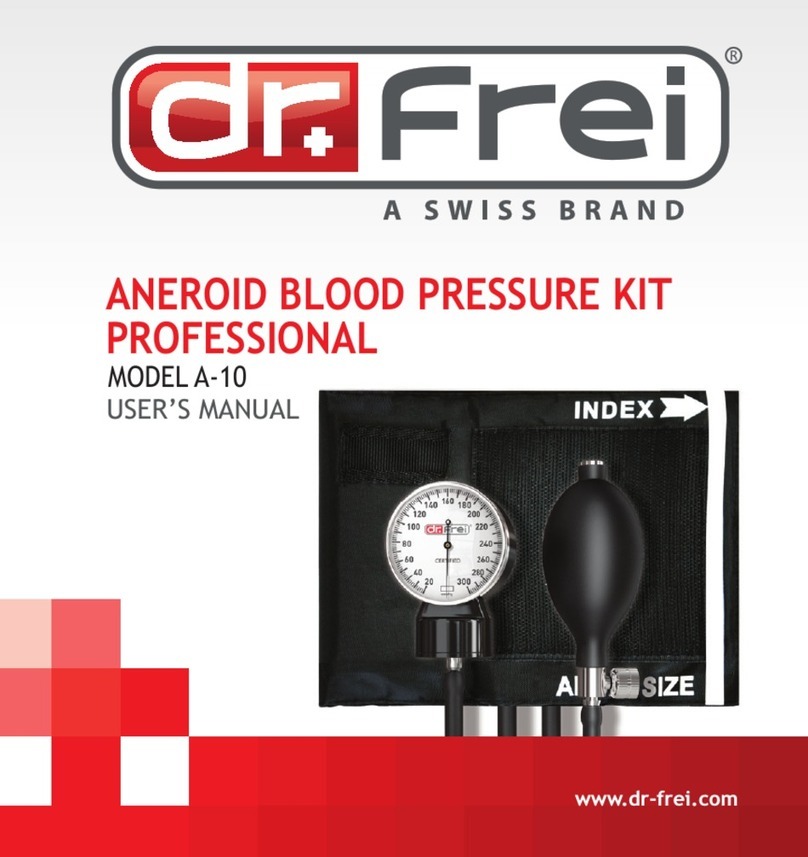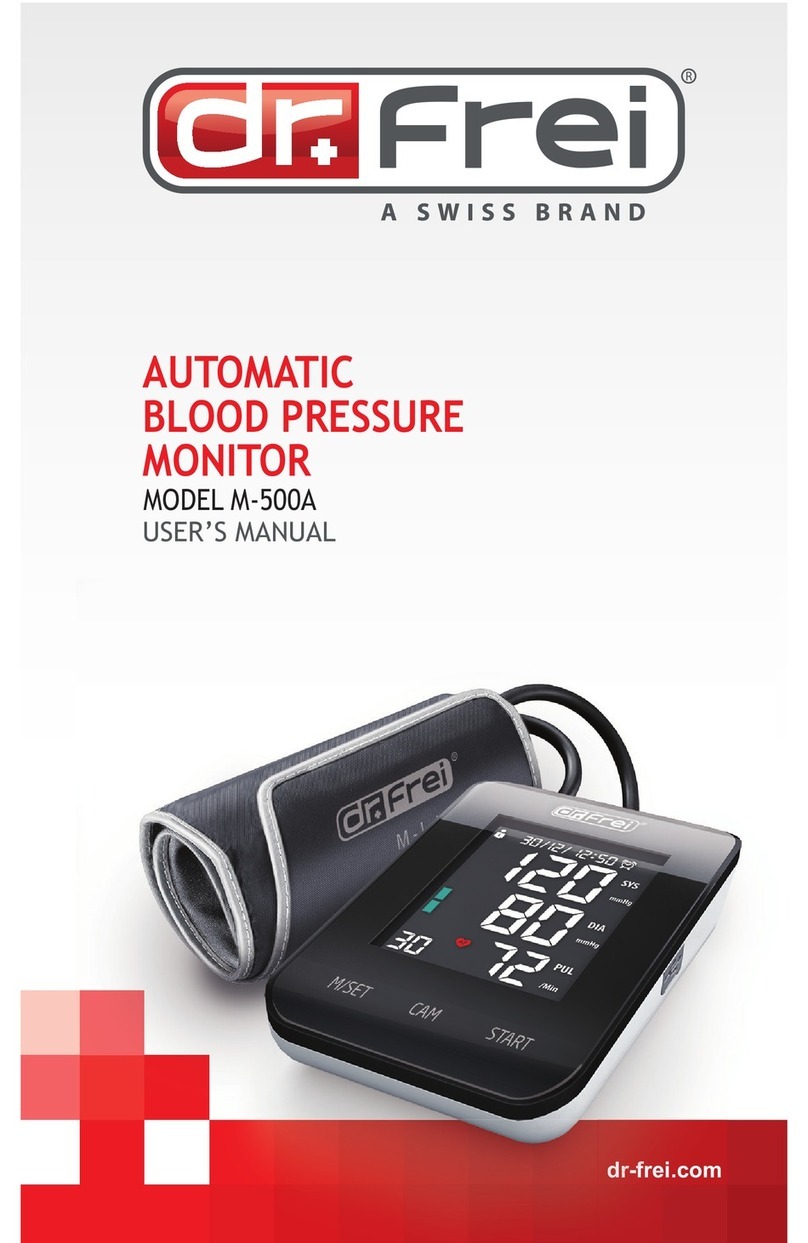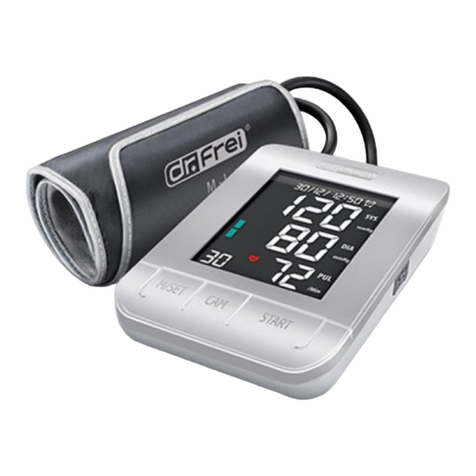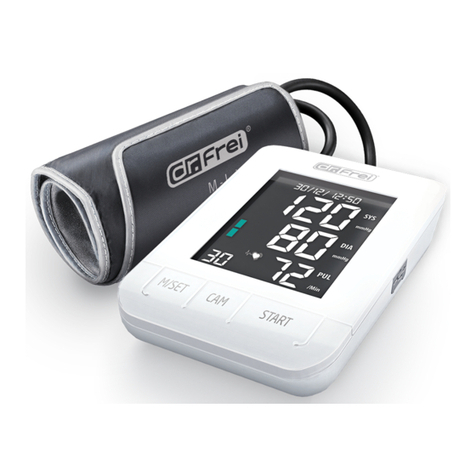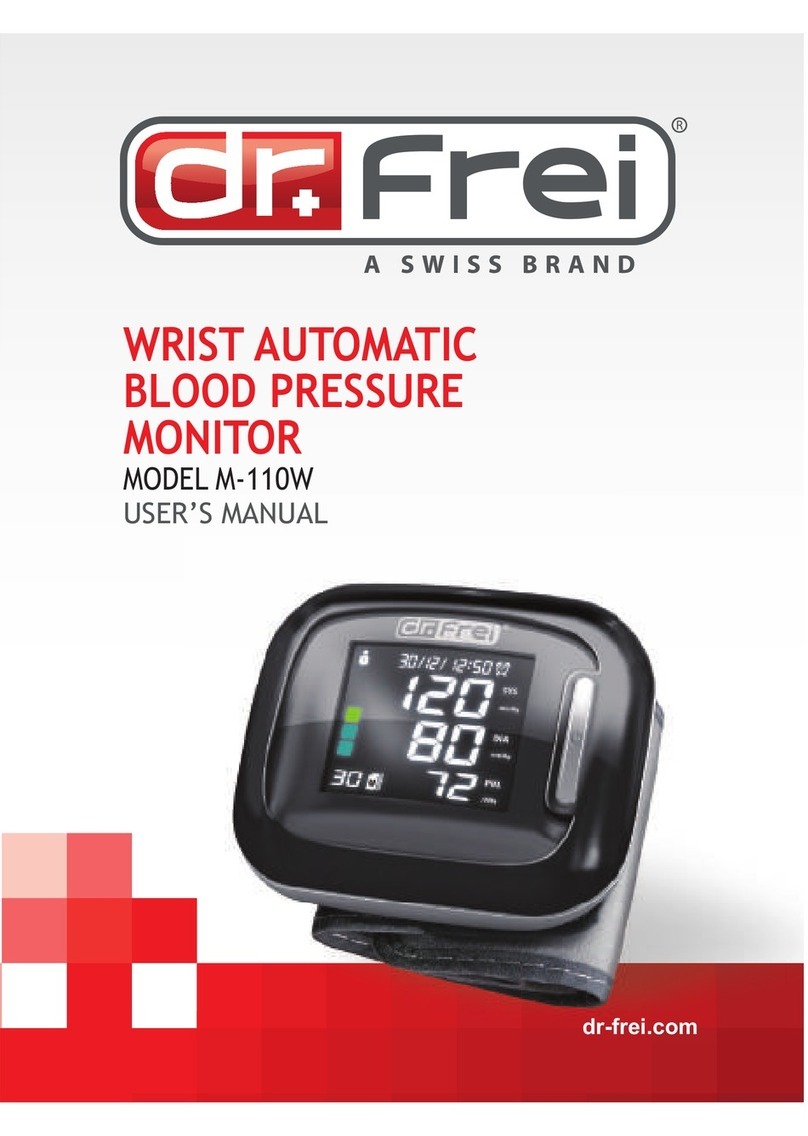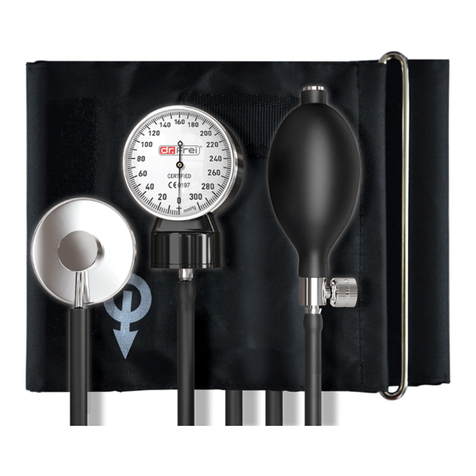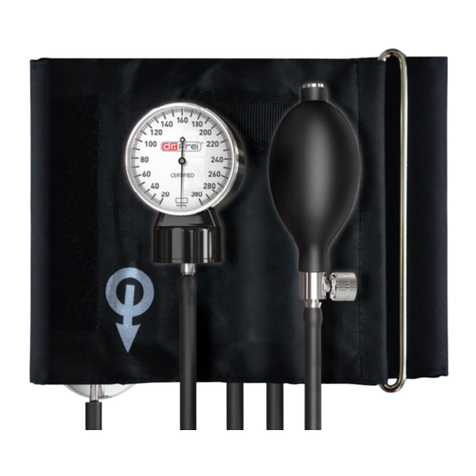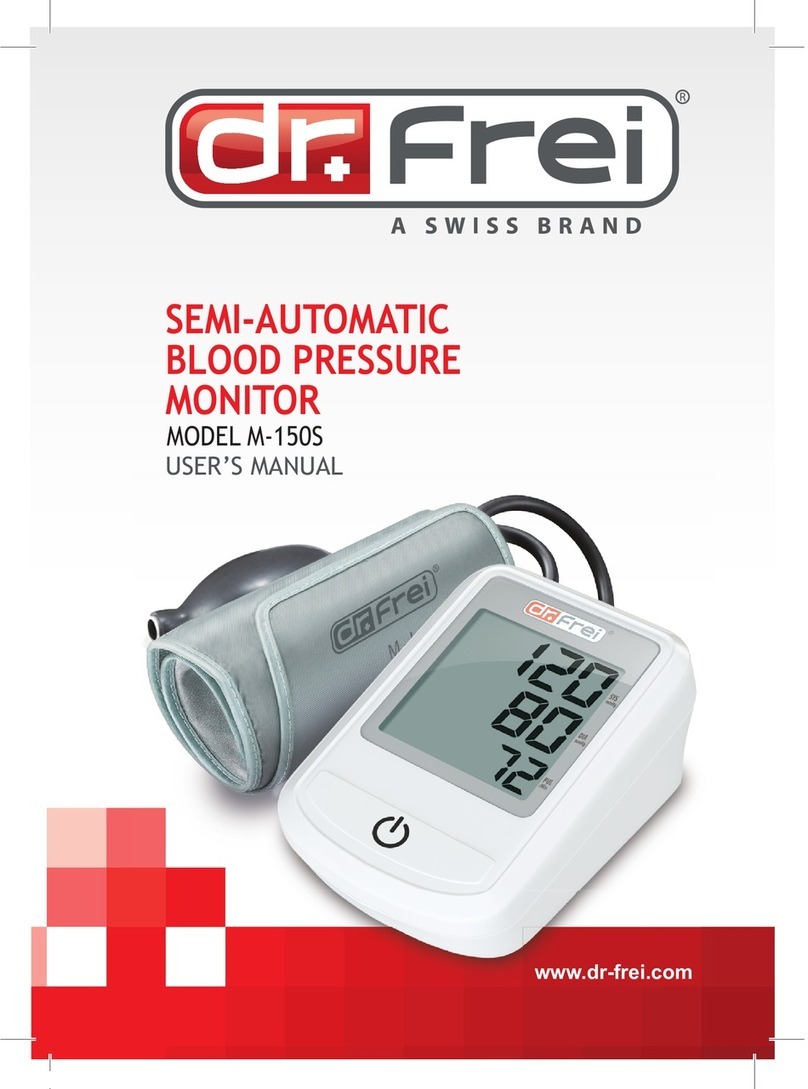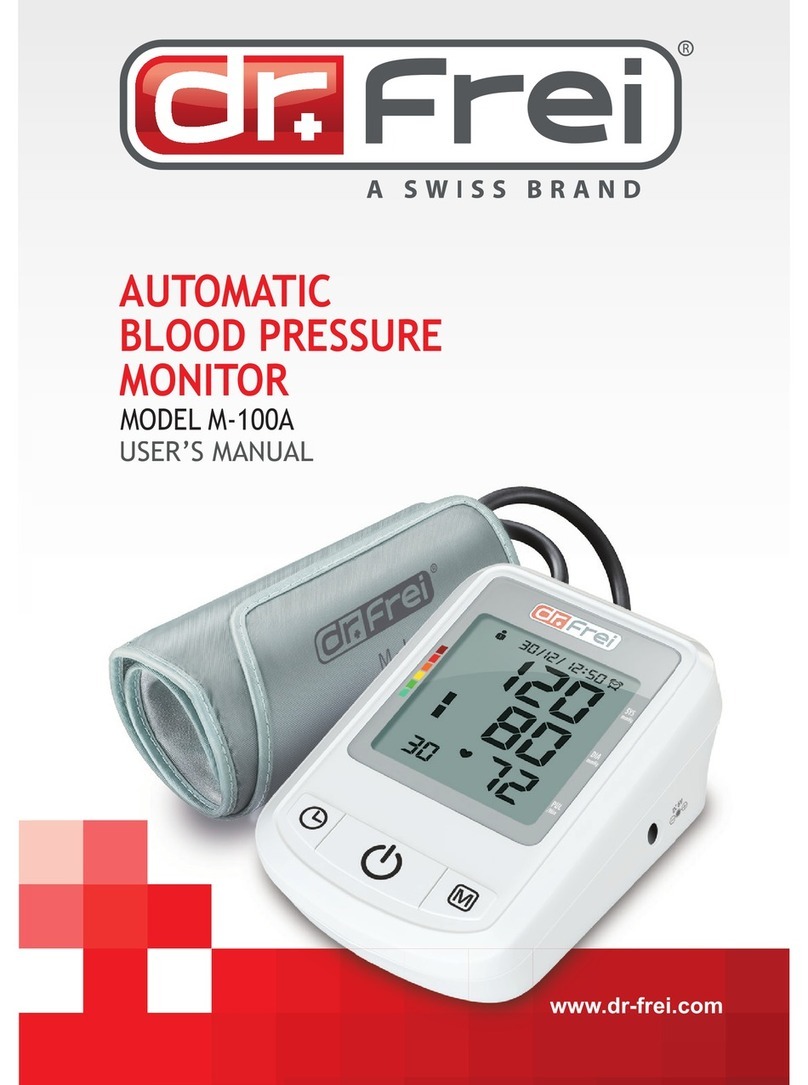10
CARE AND MAINTENANCE
To protect your unit from damage, please AVOID washing or moistening
the cuff, dropping the gauge, or hitting the surface of the stethoscope.
Your new blood pressure unit has been carefully checked to assure reli-
ability and accuracy prior to shipment and use. However, as with any
sensitive instrument subjected to repeated use, we recommend that
your blood pressure gauge be checked periodically. When the cuff is
zone. If the needle points outside of the accuracy indicator zone, the
gauge will give inaccurate readings. In this case you have to bring the
device to the nearest service centre for calibration (address mentioned
in warranty card).
WARRANTY
The blood-pressure monitor is guaranteed for 2 years from the date of
purchase. Warranty for the cuff and bulb is 1 year from the date of pur-
chase. The warranty is only valid upon presentation of the warranty card
center representative) with the date of the purchase (repair), the check,
instruction manual and safe packaging of the device.
The warranty does not apply to wear out of cuff, rubber tubes and
packaging box.
The warranty does not apply to damage caused by improper handling,
accidents, not following the operating instructions or self-maintained
alterations made to the device.
The device cannot be returned if it is without original packaging, with
mechanical damages (scratches, stains and so on) or without any
component.
The device which was used and needs repair cannot be replaced with
a new one.
In case there was violation of operating rules during warranty period,
repair will be done at the expense of the consumer.
